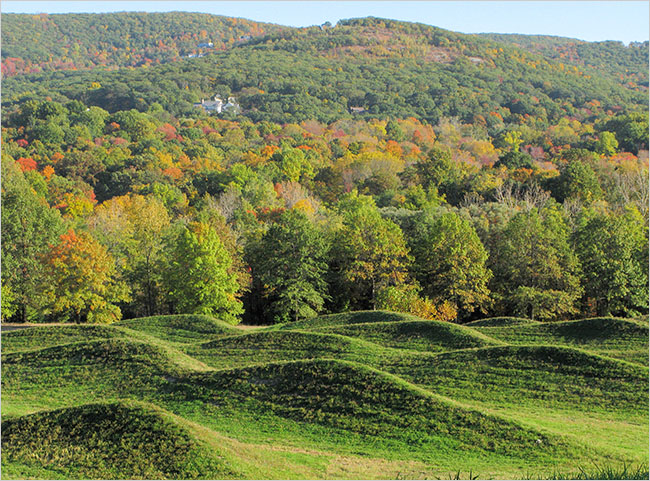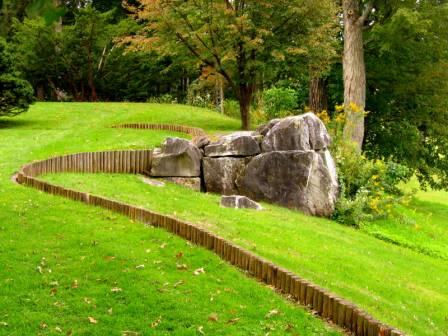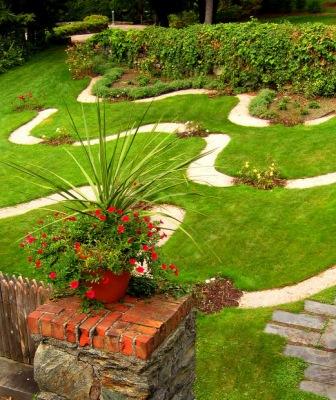Geometry comes in really handy if you’re a gardener. All those neat shapes-circles, squares, rectangles and onwards-make great design motifs in a garden. I’ve got a number of circular areas, and another spot (in front of my shed) where I made a four-square garden (except it’s four rectangles). In any case, the repeated elements bring cohesion to a garden by tying its sometimes disparate bits and pieces together. We’ve all heard about how repetition works well with plants; it’s even more effective with shapes. I saw a New York Times story and video this past weekend that really put my imagination into overdrive on the topic. It profiled the current art/landscape design work of Maya Lin, prodigy designer of the distinctive black, chevron-shaped Vietnam War Memorial in Washington DC. She’s now working with wave forms as sculptural elements in the landscape. Above is her latest effort, at the Storm King Art Center in New York (photo by Colleen Chartier for the NYT). Gee. I wondered, is this something that might work as an effective geometric element in garden? Turns out it does.
Good examples can be found at Naumkeag, where the iconic Fletcher Steele designed several gardens during a 30-year collaboration with estate’s former owner, Mabel Choate. Naumkeag is now open to the public thanks to the ongoing efforts of The Trustees of Reservations. Steele’s modernist, Orient-tinged contributions fit happily alongside more traditional classically-themed gardens constructed earlier at the site. His most wavelike effort, like Maya Lin’s, required reshaping a landscape–that of the South Lawn at Naumkeag–in what is regarded as the first modern “earthwork” in American landscape design. He then ornamented that hillside with an low undulating cedar fence-a wavy line.
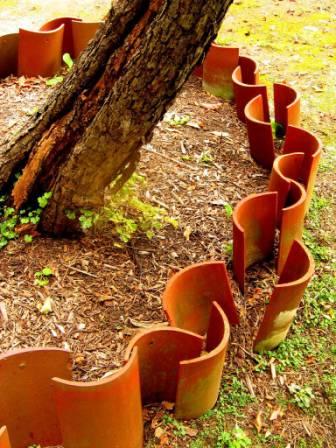 Wavy lines are a much simpler way to celebrate wave shapes in the garden, At least you don’t need to bring in earth-moving qequipment to realize your vision. Steele used lotsof other wavy lines at Naumkeag. His most famous are the serpentine gravel pathways that shimmy through the Rose Garden. And, in the Oriental Garden, edgings around the trees were made from terra cotta roofing tiles laid to mimic wave forms.
Wavy lines are a much simpler way to celebrate wave shapes in the garden, At least you don’t need to bring in earth-moving qequipment to realize your vision. Steele used lotsof other wavy lines at Naumkeag. His most famous are the serpentine gravel pathways that shimmy through the Rose Garden. And, in the Oriental Garden, edgings around the trees were made from terra cotta roofing tiles laid to mimic wave forms.
And in Naumkeag’s Afternoon Garden, a boxwood parterre is laid out in yet another arabesque of wavy lines. Naumkeag is really a collection of many very different gardens, but the recurring use of wavy lines and waveforms–including the wavy horizon line provided by the distant Berkshire Mountains, provide an element of continuity for this inspiring, eclectic masterpiece.
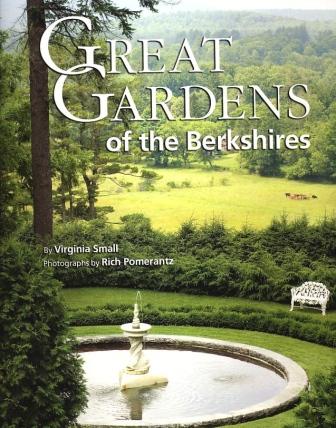 On the subject of Naumkeag, I’d like to give a shout-out to a new book by my friend Virgina Small, a former colleague at Fine Gardening magazine. “Great Gardens of the Berkshires” covers these Fletcher Steele gardens along with 16 other splendid gardens in western Massachusetts and northwestern Connecticut. Unlike lots of “great gardens of…” books, this one has a practical edge, with lots of useful tips on design concepts and on sources of inspiration. It also has fine photos, by Rich Pomerantz, which confirm just how effective those design concepts can be. I’m indebted to Virginia for providing a few details about Naumkeag’s development.
On the subject of Naumkeag, I’d like to give a shout-out to a new book by my friend Virgina Small, a former colleague at Fine Gardening magazine. “Great Gardens of the Berkshires” covers these Fletcher Steele gardens along with 16 other splendid gardens in western Massachusetts and northwestern Connecticut. Unlike lots of “great gardens of…” books, this one has a practical edge, with lots of useful tips on design concepts and on sources of inspiration. It also has fine photos, by Rich Pomerantz, which confirm just how effective those design concepts can be. I’m indebted to Virginia for providing a few details about Naumkeag’s development.

